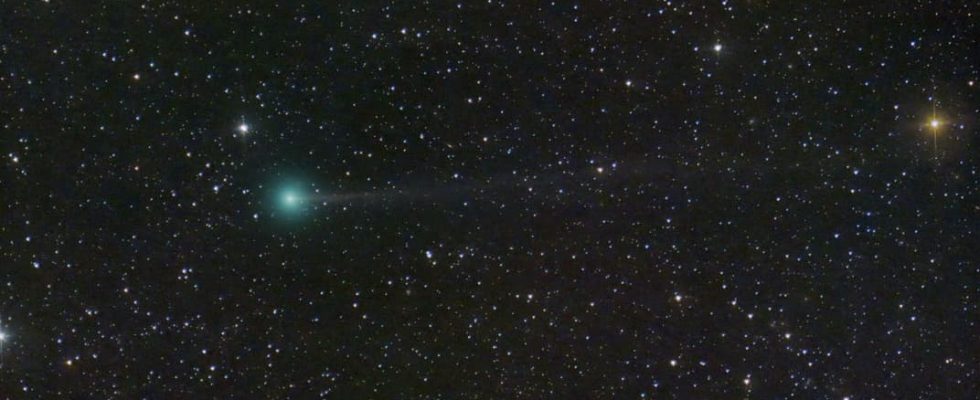Discovered only a few weeks ago, comet Nishimura will move closer to the Sun, which will cause it to shine, leaving behind a shower of dust. A show not to be missed.
Notice to budding astronomers. Comet C/2023 P1, better known as comet Nishimura, in reference to the name of the Japanese amateur astronomer who made its discovery, continues its journey towards the Sun. When comets approach our star, the ice contained in their core sublimates and releases a long trail of dust reflecting the Sun’s light. A rare event to observe.
Comet Nishimura will be closest to our star on September 17, 33 million kilometers from it and 125 million kilometers from Earth.
The phenomenon, if it is already observable, will be particularly so on the night of Friday September 8 to Saturday September 9. The comet will indeed be much brighter, especially in the northern hemisphere of the globe.
“It will be very difficult to see for non-experts,” warns astrophysicist Eric Lagadec on X, ex-Twitter, however.
Looking at the sky around 6 a.m. before sunrise
If a telescope is obviously more than recommended to observe the comet in the best possible conditions, you still need to know the ideal schedule and weather conditions to enjoy the show.
“The best is to look at the sky before sunrise (around 6 a.m. in France, Editor’s note), towards the northeast to the left of Venus (commonly called the Shepherd’s Star), in a clear, pollution-free sky. bright”, advises Nicolas Biver, CNRS researcher at the Paris Observatory – PSL.
A trail of greenish dust
Small binoculars will suffice to enjoy the show, which some could even see with the naked eye if atmospheric conditions are suitable. For those with eagle eyes, the trail of comet C/2023 P1 will be greenish in colordue to its gas content more than dust.
Its last passage near our star dates back 437 years. All the more reason not to miss it.

